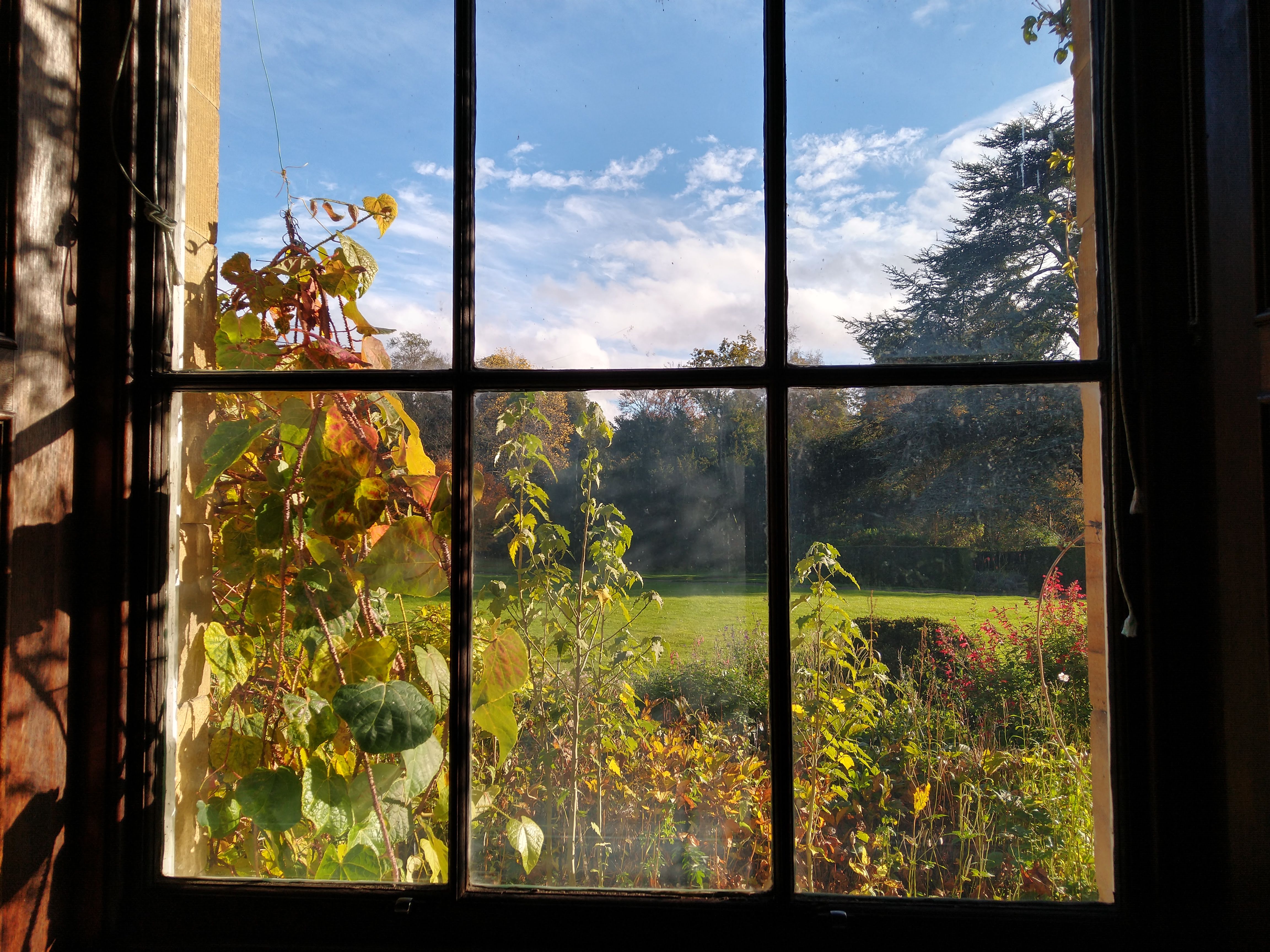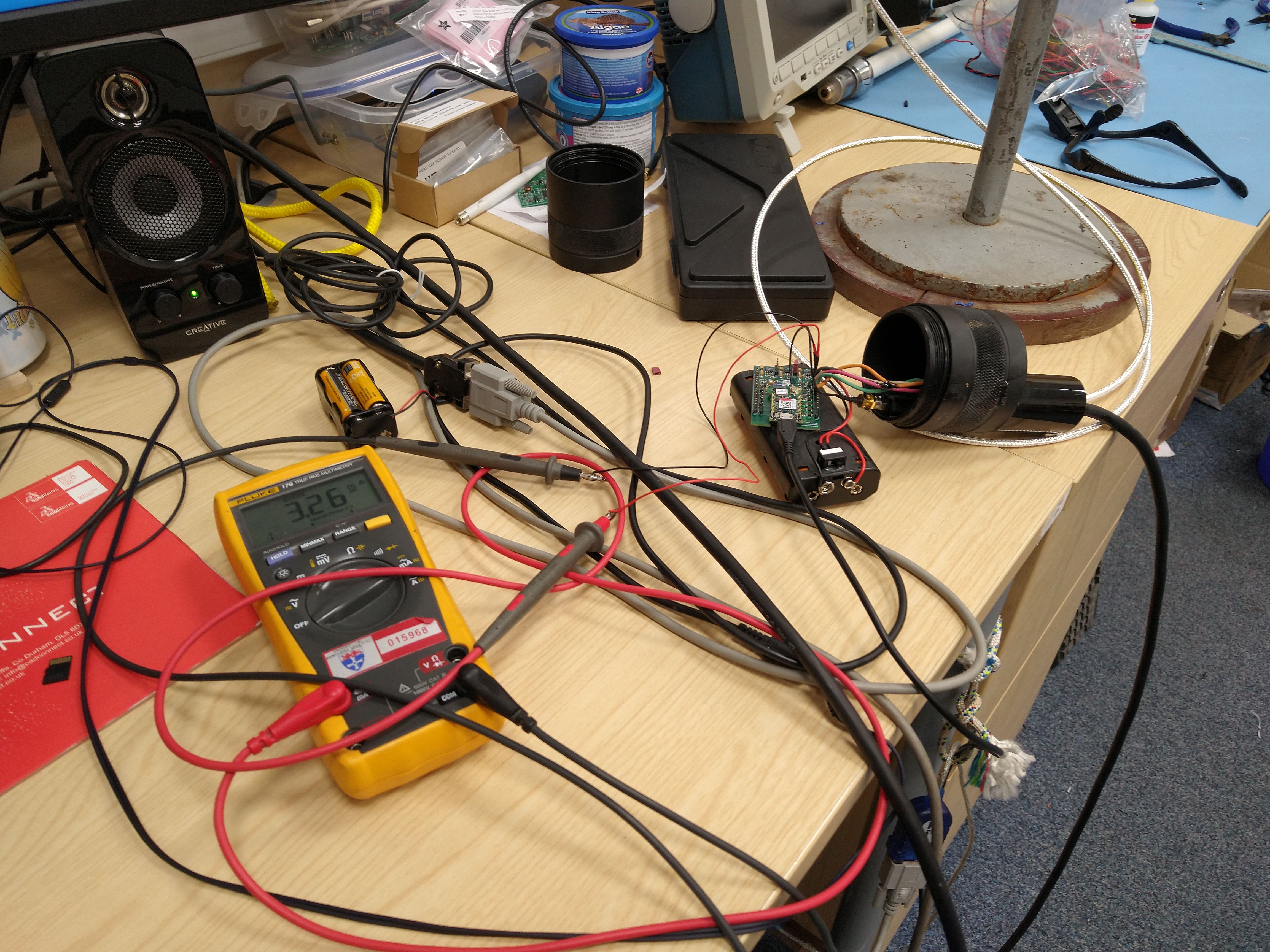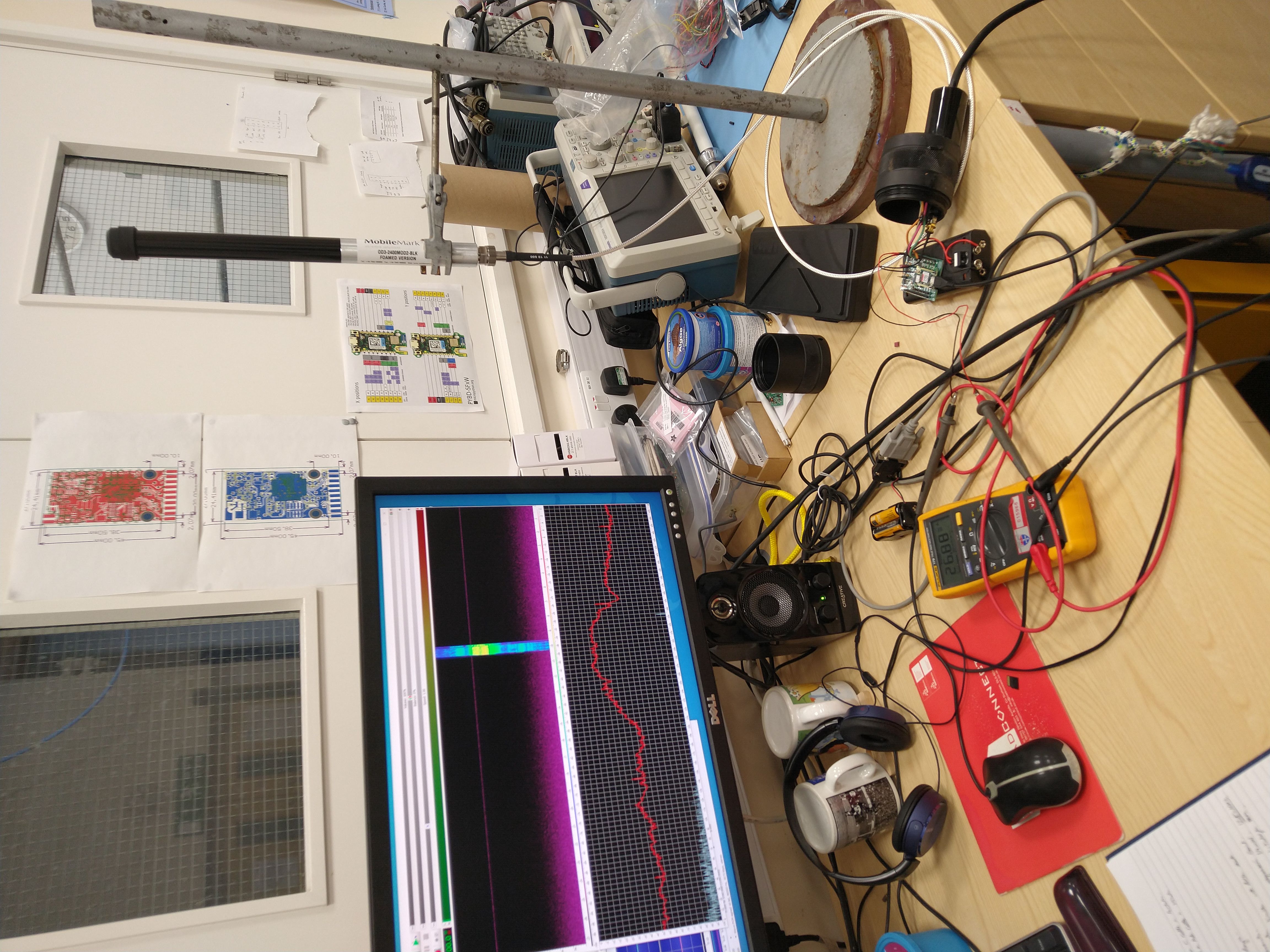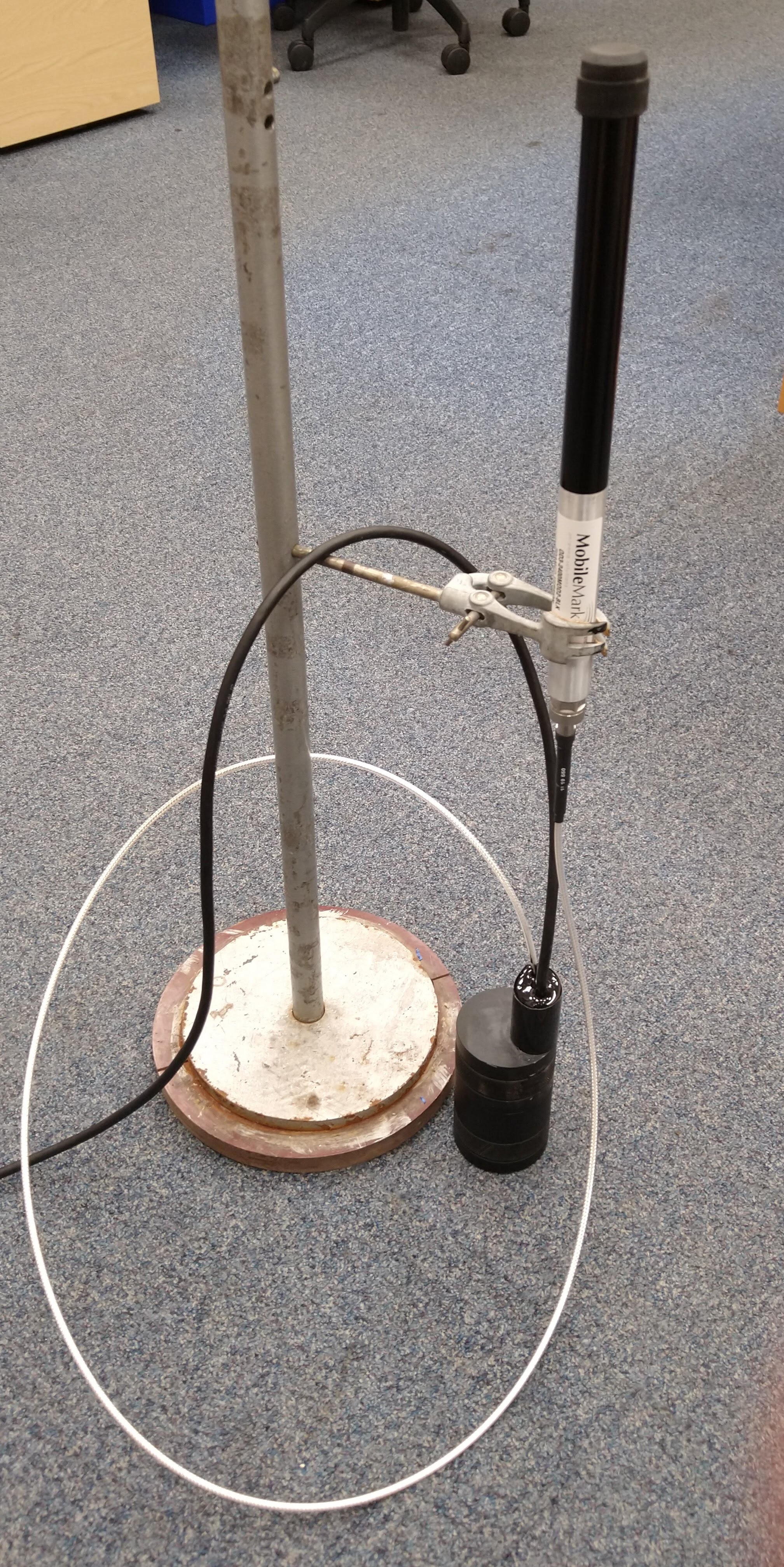Remote hardware development and testing in the lab
In the late summer of 2020 the university allowed us to return, in a covid-secure manner, to our lab. The plan for our sea trials was back on. Now instead of working solely from home, or being full-time in the lab, we could take a pragmatic approach to progressing the hardware and software development.

Gateway and Sensor Nodes
A gateway node was needed to relay data from various underwater environmental sensors back to shore. For example, the marine animal detectors send data messages hourly via acoustic modem, then the gateway relays these via radio back to shore where they can then be analysed in near real-time.
Iterative development
When development of the new data gateway node was in full flow, I was able to: update firmware on the gateway node; send messages through our underwater test tank to its acoustic modem; and finally receive the resultant radio messages on a nearby server. All accessed through remote desktop from home. This set-up supported the iterative turnaround of “code, upload, test, and repeat” that we use in a normal environment. It really accelerated the development process.
 Benchtop development of the Gateway Node. Ammeter showing the standby current draw. MicroPython PYBD is connected to the PC with the USB cable. Canister base shows cables to a NM3 acoustic modem in the tank next door. Silver cable to the radio antenna. Small battery pack and serial cable are connected to the second NM3 modem also in the test tank. This second modem sends regular “sensor” messages to the gateway.
Benchtop development of the Gateway Node. Ammeter showing the standby current draw. MicroPython PYBD is connected to the PC with the USB cable. Canister base shows cables to a NM3 acoustic modem in the tank next door. Silver cable to the radio antenna. Small battery pack and serial cable are connected to the second NM3 modem also in the test tank. This second modem sends regular “sensor” messages to the gateway.
There is more information about the MicroPython PYBD that we are using found at: pybd.io/hw/pybd_sfxw.html
Much of the software development and testing could be done from home. The addition of a remotely connected ammeter and voltmeter would have made some of the work around power usage a bit easier.
Audio monitoring
 Zoomed out view of the development bench. Showing the spectrogram from a hydrophone also in the test tank. Evidence of the NM3 acoustic message can be seen on the screen.
Zoomed out view of the development bench. Showing the spectrogram from a hydrophone also in the test tank. Evidence of the NM3 acoustic message can be seen on the screen.
Finally, there is a simple transducer suspended in the test tank and connected via a soundcard to the PC. This provides a window into the acoustic world to visualise the communications between NM3 modems.
Future
Development continues on sensor nodes and incorporating further network protocols. But the first gateway node is now about ready for deployment at sea.
 Assembled gateway node showing canister and antenna.
Assembled gateway node showing canister and antenna.